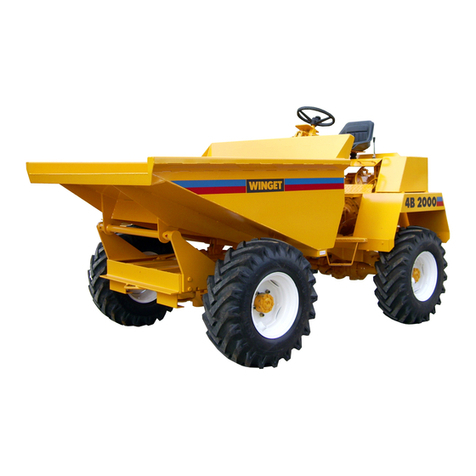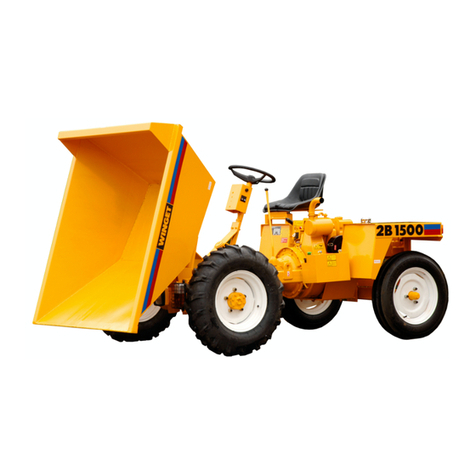
SAFE WORKING 8
Always avoid contact with the exhaust muffler, this can get very hot
when the engine is running and remains so for some time afterwards.
Always “dump” residual hydraulic pressure from the system before
leaving the machine. Lower the skip; stop the engine, then move the
hydraulic control lever several times in each direction.
Never leave the machine unattended with pressure in the hydraulic
system.
Always, where possible, work on or close to engines or machinery
when carrying out servicing or any maintenance, only when they are
stopped, if this is not practical, remember to keep tools, test
equipment and all parts of your person well away from moving parts.
Always wear correctly fitting clothing when carrying out servicing,
loose or baggy clothing can be extremely dangerous when working
on running engines or machinery.
Always “dump” pressure from the hydraulic system before carrying
out any kind of maintenance or adjustment.
Never allow unqualified personnel to attempt to repair, remove or
replace any part of the machine.
Always obtain advice before mixing oils; some are incompatible, if in
doubt completely drain, flush and refill.
Many liquids used in this machine are harmful if taken internally or
splashed into the eyes. In the event of accidentally swallowing oils or
fuels, seek qualified medical assistance and advice.
Always dispose of waste oils and fuels into designated waste oil
storage tanks. If storage tanks are not available, consult your
distributor or local authority for the addresses of local designated
disposal points. Improperly discarded waste oils pose a threat to
wildlife. It is illegal to dispose of waste oil into drains, or water
courses or to bury it. The Environment Agency have the power to
impose heavy fines for breaches of the above advice.
Never allow oils and fuels to come into regular contact with skin.
This can lead to serious skin diseases, including, medical evidence































